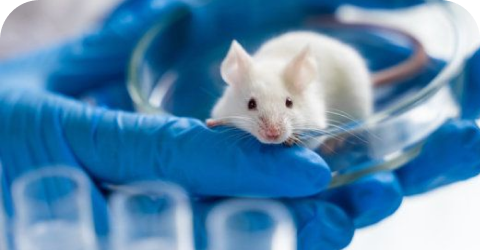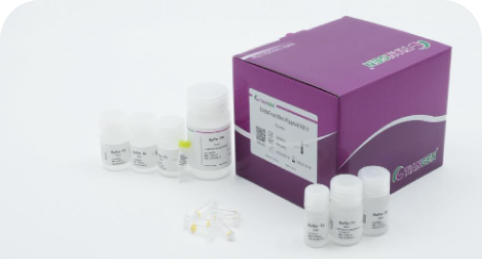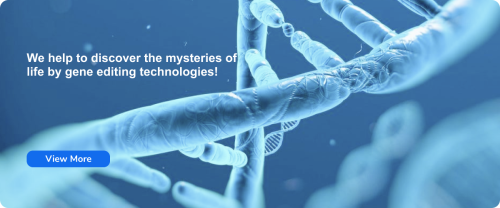CCR8, as a novel immune checkpoint in tumor microenvironment, was hotly discussed during 2022 AACR conference. Since then, numerous prestigious pharmaceutical corporations have shifted their attention to CCR8, previously almost unknown. You may wonder why CCR8 gave rise to so strong interest of pharmaceutical industry. Just follow us to have a quick review of CCR8, a new star in immunotherapy.
What’s the CCR8
Chemokine (C-C motif) receptor 8, also known as CCR8, is a protein, encoded by the CCR8 gene, also designated as CDw198. CCR8 encodes a member of the beta chemokine receptor family, which is predicted to be a seven transmembrane protein similar to G protein-coupled receptors. CCR8 is specifically over-expressed on the surface of regulatory T cells (Treg cells) in tumor microenvironment, while expression of CCR8 is rarely observed in peripheral blood and normal tissues.
CCR8 facilitates recruitment of Treg cells and Th2 cells, and its overexpression is closely associated with multiple cancers including colorectal cancer, breast cancer, metastatic brain cancer, metastatic liver cancer. CCR8 is considered to be potential biomarker of Treg cells in tumor microenvironment, and promising target for immunotherapy.
CCL1-CCR8 Signaling in Cancer Progression
CCL1 is the major ligand of CCR8, and CCR8 is the only known receptor of CCR8. The interaction between CCR8 and its ligand plays a key role in progression of multiple type-specific tumors and mediation of immune evasion of tumors.
In tumor microenvironment, CCL1, secreted by carcinoma-associated fibroblasts and tumor-associated macrophages, plays a crucial role in angiogenesis and other viral tumoral processes including metastasis, proliferation and apoptosis, through binding to CCR8 receptor. Besides, CCL1 can promote the recruitment of Treg cells and the differentiation of CD4 + T cells into Treg cells. Based on these facts, blocking CCL1/CCR8 signaling is considered to be another strategy of immunotherapies for cancer.
The Clinical Prospects of CCR8
So far, numerous pharmaceutical companies have shifted their attention to development of CCR8-targeted drugs, majority of which are monoclonal antibodies. The following table demonstrates some CCR8-targeted drugs under development.
| Drug Names | Categories | Companies | Research Phase |
| BMS-986340 | Monoclonal Ab | Bristol-Myers Squibb | Clinical phase Ⅰ/Ⅱ |
| S-531011 | Monoclonal Ab | Shionogi | Clinical phase Ⅰ/Ⅱ |
| SRF114 | Monoclonal Ab | Vaccinex | Clinical phase Ⅰ/Ⅱ |
| ABBV-514 | Monoclonal Ab | Abbvie | Clinical phase Ⅰ/Ⅱ |
| BAY 3375968 | Monoclonal Ab | Bayer | Clinical phase Ⅰ |
| JTX-1811 | Monoclonal Ab | Jounce Therapeutics | Clinical phase Ⅰ |
| AZ084 | Monoclonal Ab | AstraZeneca | Preclinical phase |
| CHS-3318 | Monoclonal Ab | Coherus BioScience | Preclinical phase |
| FPA157 | Monoclonal Ab | Amgen | Preclinical phase |
| GNUV202 | NA | Genuv | Preclinical phase |
| HFB101110 | Monoclonal Ab | FibroGen | Preclinical phase |
| PSB114 | Monoclonal Ab | Sound Biologics | Preclinical phase |
| REMD-355 | Monoclonal Ab | Remd Biotherapeutics | Preclinical phase |
| SB-649701 | Molecular Inhibitor | GSK | Preclinical phase |
| ZK 756326 | Molecular Activator | Berlex Biosciences | Preclinical phase |
SMOC Humanized Mice for CCR8/CCL1 Signaling-targeted Drug Research
Smoc has been striving to develop immune checkpoint-humanized mice, including CCR8 and CCL1 humanized mice, which work as powerful tools for efficacy evaluation and safety assessment of CCR8-targeted drugs.
The following table presents SMOC genetically modified mice intended for research of CCR8-targeted drugs.
| Genes | Model Names | Catalog No. | Strain State |
| CCR8 | Ccr8-KO | NM-KO-190024 | Repository Live |
| hCCR8 | NM-HU-190053 | Repository Live | |
| hCCR8(2) | NM-HU-200054 | Repository Live | |
| hCCR8(BALB/c) | NM-HU-200048 | Repository Live | |
| hCCR8/hCTLA-4 | NM-HU-210435 | Repository Live | |
| hCCR8/hPD-1 | NM-HU-210400 | Repository Live | |
| hCCR8/hTIGIT | NM-HU-210426 | Embryo Cryopreservation | |
| CCL8 | Ccl8-KO | NM-KO-190521 | Repository Live |
| CCL1 | Ccl1-KO | NM-KO-190009 | Embryo Cryopreservation |
| hCCL1 | NM-HU-2000074 | Embryo Cryopreservation |
Validation Data of hCCR8 Mice
If you require more validation data about CCR8-humanized mice, don’t hesitate to contact us at service.us@modelorg.com.
References
[1] Cinier J, Hubert M, Besson L, et al. Recruitment and Expansion of Tregs Cells in the Tumor Environment-How to Target Them? Cancers (Basel). 2021;13(8):1850. Published 2021 Apr 13.
[2] Korbecki J, Grochans S, Gutowska I, Barczak K, Baranowska-Bosiacka I. CC Chemokines in a Tumor: A Review of Pro-Cancer and Anti-Cancer Properties of Receptors CCR5, CCR6, CCR7, CCR8, CCR9, and CCR10 Ligands. Int J Mol Sci. 2020;21(20):7619. Published 2020 Oct 15.
[3] Karin N. Chemokines and cancer: new immune checkpoints for cancer therapy. Curr Opin Immunol. 2018;51:140-145.
[4] Campbell JR, McDonald BR, Mesko PB, et al. Fc-Optimized Anti-CCR8 Antibody Depletes Regulatory T Cells in Human Tumor Models. Cancer Res. 2021;81(11):2983-2994.









